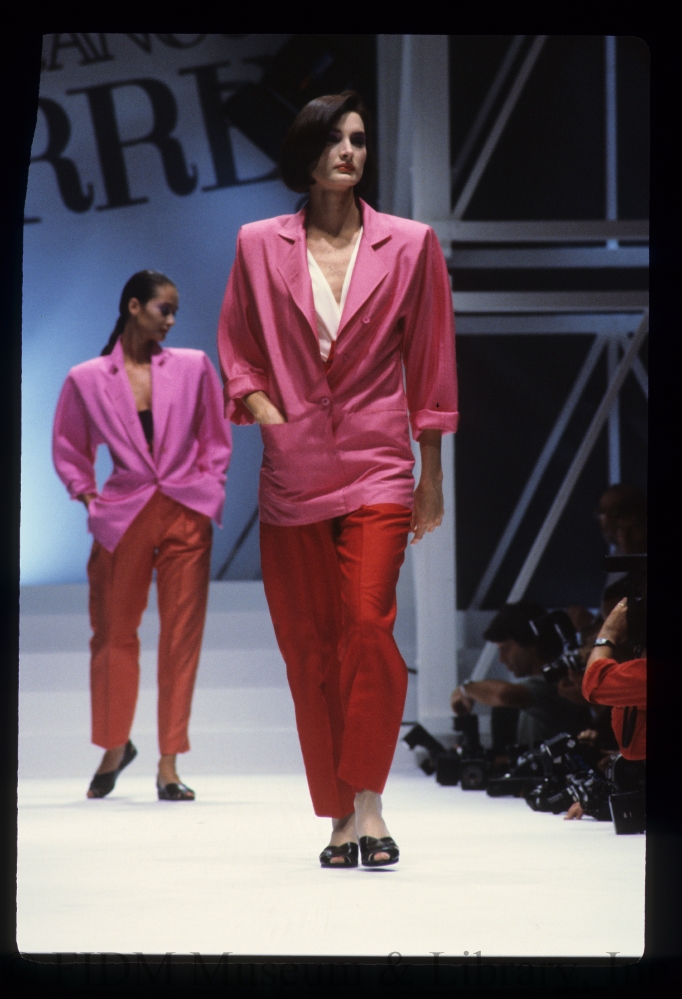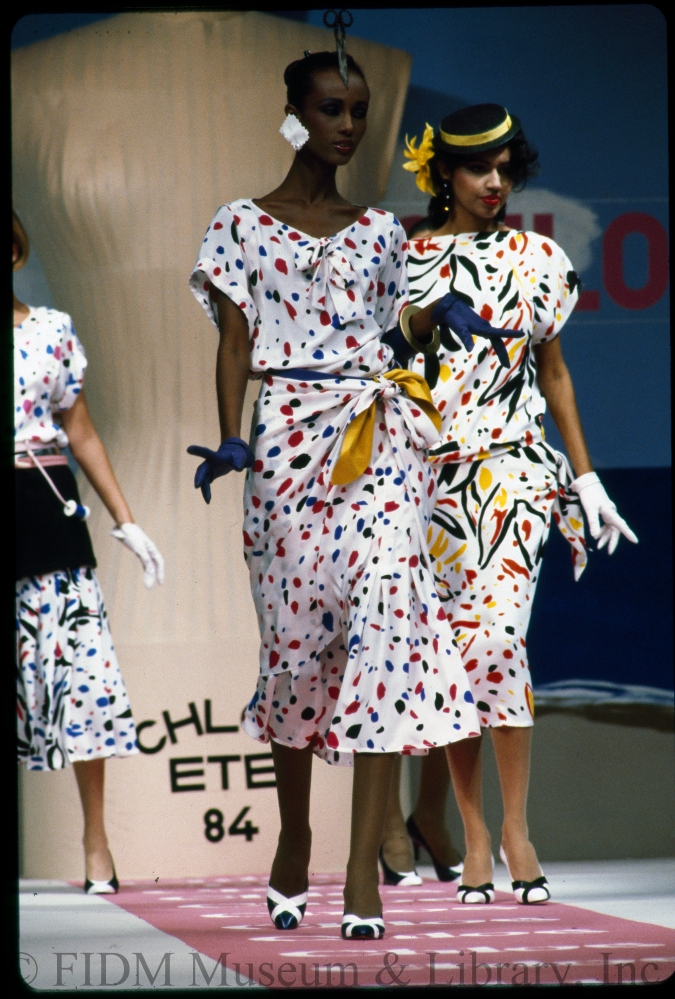Today’s intern report comes from Yvonne Sone, MLIS graduate of the University of Washington. Yvonne worked closely with our Michel Arnaud Fashion Photography Archive, and was vital in our efforts to prepare for the launch of our Google Arts & Culture platform. Yvonne received her BFA in Fashion Design from Woodbury University, and has two decades of experience in the vintage fashion industry. In addition to her passion for historic costume and textiles, she is interested in public librarianship, information access, and community outreach.
******************************************************************************************************
Modern day fashion is a parade of anything goes—from the outrageously oversized to the androgynous, to celebrity red carpet looks pushing the boundaries of what was previously deemed in good taste, to the recent phenomenon of anti-fashion (yet stylistically conscious) movements like Normcore. Fashion is widely recognized as a means of expressing individuality, standing out from the masses, or choosing to quietly fly under the radar.
Over the last five months, I’ve found myself knee deep in exploring all things Spring/Summer 1984, thanks to my work in helping to digitize the Michel Arnaud Fashion Photography Archive for publication. As a recent graduate student in Library and Information Science, one degree requirement hinged on the completion of a capstone project, executing new principles and skills in a professional environment. I reached out to Museum Registrar Meghan Hansen, whom I had volunteered with many years ago. Meghan acquainted me with the Michael Arnaud Fashion Photography Archive, 185,000 35mm slides documenting fashion photography from the 1970s-2000s.
Gianfranco Ferré, Spring/Summer 1984
FIDM Museum and Galleries had long been scanning and digitizing the slides in order to make the images available for educational purposes, but in the interim, a new challenge was presented: making the images available in exhibit format for publication on Google Arts & Culture. Components central to successful digitization included conducting primary source research on the images, writing captions to describe the individual looks, and creating the necessary metadata to enable searching. Some of these tasks may not seem as compelling as others, but all are needed to facilitate an experience that is informative and engaging for the user.
Oscar de la Renta, Spring/Summer 1984
Conducting primary source research to support the Michel Arnaud photographs was a dream come true for this fashion and history lover. Together, Meghan and I agreed it would be especially intriguing to analyze each collection by season. I buried myself in ProQuest Historical Newspapers and various fashion magazine archives, uncovering the historical context, influences, and media reactions to the Spring/Summer 1984 collections of Chloé, Gianfranco Ferré, Oscar de la Renta, and Comme des Garçons.
Karl Lagerfeld for Chloé, Spring/Summer 1984
The similarities and divergences of looks and philosophies between designers was immensely fascinating, but perhaps most entertaining were the reviews. In 1984, the “Japanese Explosion” was still in its infancy; the “shapeless, three-sizes-too-large-look” [1] of designers like Issey Miyake, Rei Kawakubo, and Kansai Yamamoto were received with shock and awe. At a time when the French were continuing with the centuries long tradition of clothing closely following the body line, the Japanese were poised to turn convention on its head. It is refreshing to see many of these collections from over 30 years ago remain relevant, fresh, and fashion forward.
Comme des Garçons, Spring/Summer 1984
With the sheer volume of the Michel Arnaud Photography Archives comes many years, if not decades, of dedication and hard work to make access possible. As each image and collection is processed, a wealth of information bridging art and commerce emerges alongside the convenience of browsing these images from the comfort of home. As fashion photographers gain recognition and their work increasingly legitimized as art, we have much to gain from studying what came before. Michel Arnaud’s impressive archives surpass mere aesthetics as a glimpse into the evolution of the fashion industry.
[1] Marylou Luther, “Japanese Designs: Out of Post-Atomic Ashes,” Los Angeles Times (Los Angeles, CA), Oct. 17, 1983.





